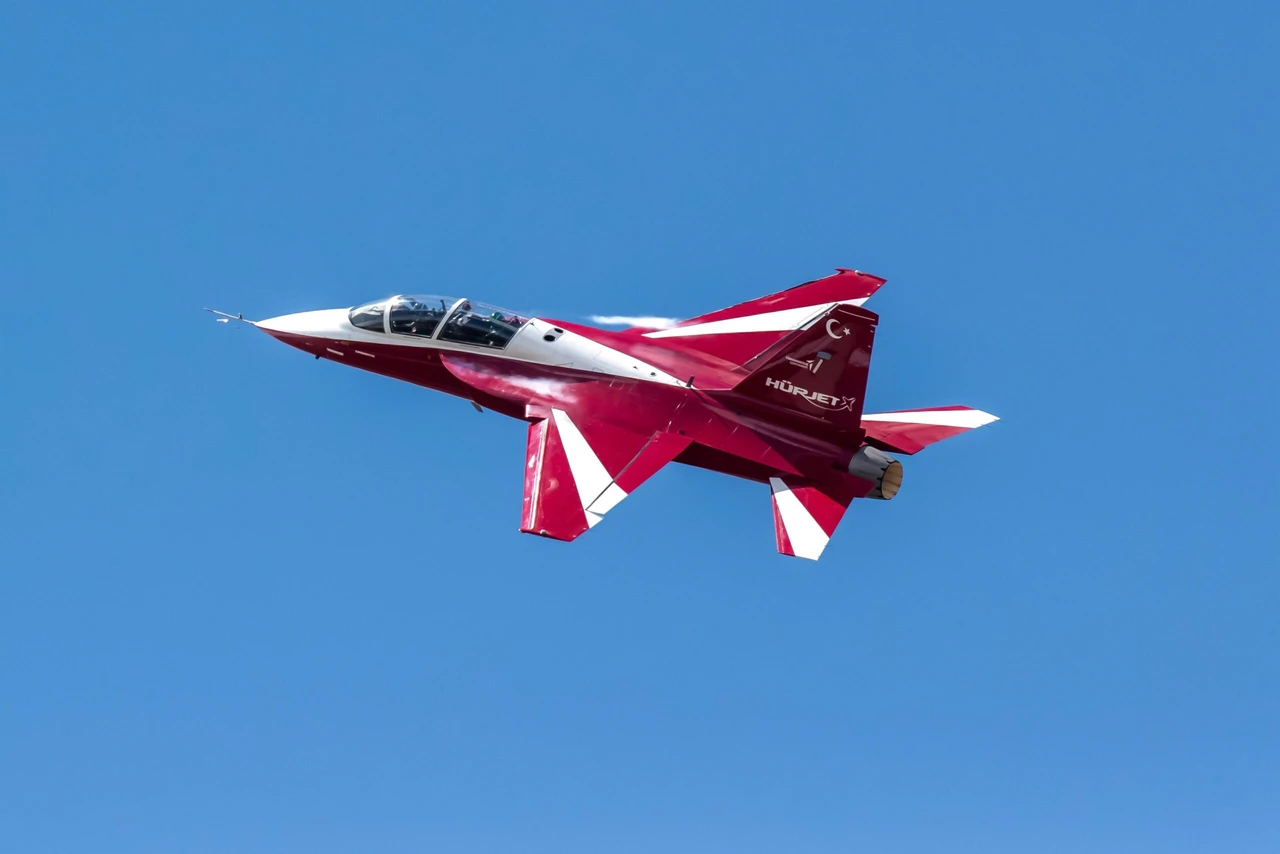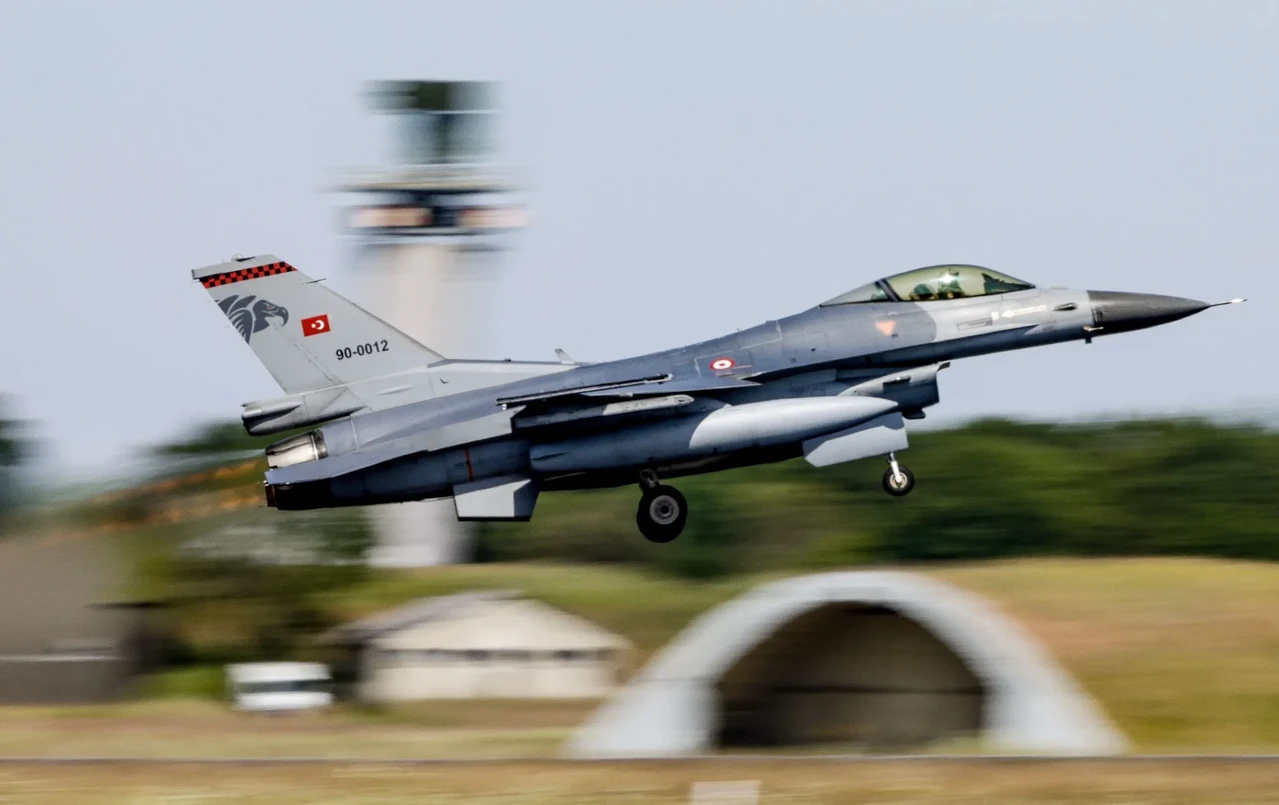Turkish Aerospace Industries CEO sets bold export goals, targets US and European markets
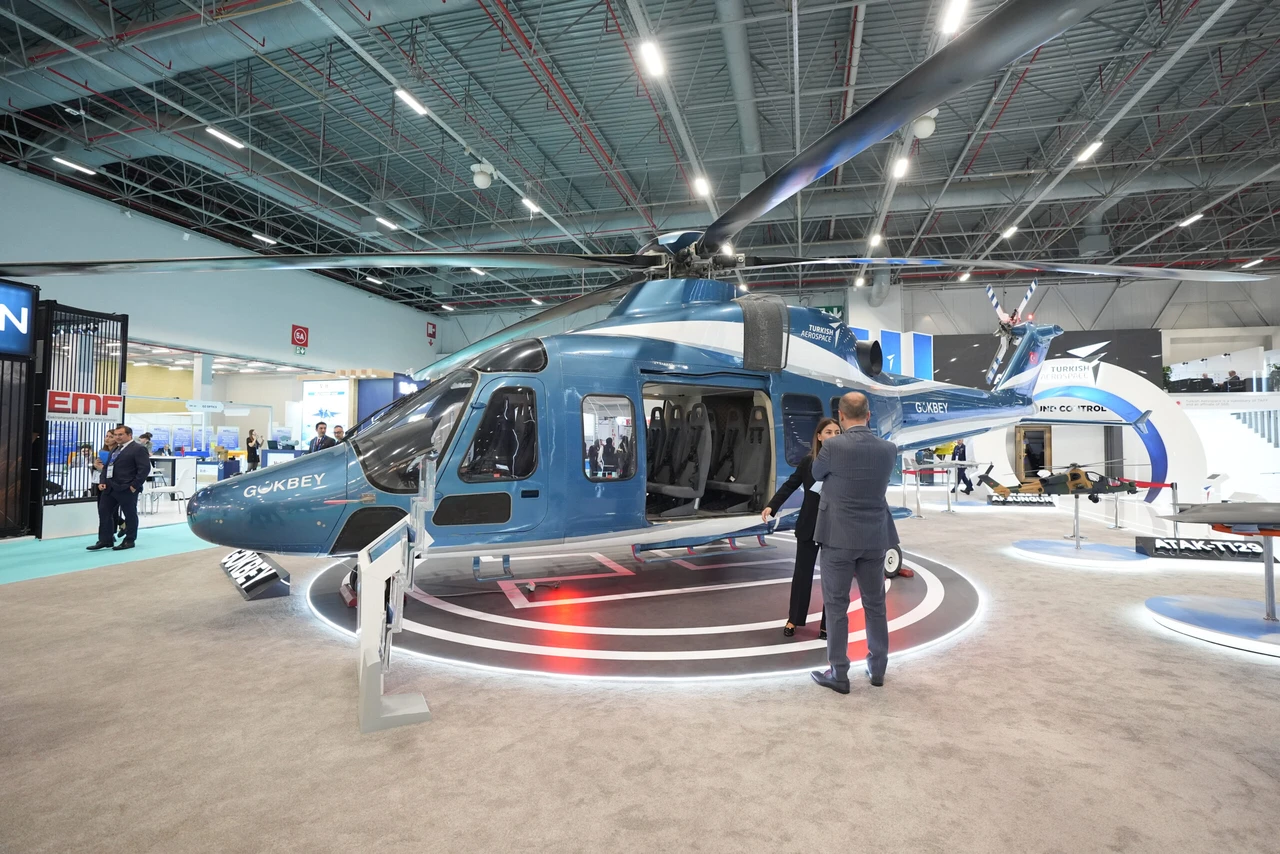 People visit booth of Gokbey by Turkish Aerospace Industries during SAHA EXPO 2024 International Defense and Aerospace Exhibition at Istanbul Fair Center, Türkiye on October 22, 2024. (AA Photo)
People visit booth of Gokbey by Turkish Aerospace Industries during SAHA EXPO 2024 International Defense and Aerospace Exhibition at Istanbul Fair Center, Türkiye on October 22, 2024. (AA Photo)
Turkish Aerospace Industries (TAI) CEO Mehmet Demiroglu has unveiled ambitious plans to expand the company’s footprint in European and U.S. defense markets, aiming for a 50% increase in exports in 2024.
Speaking at the Defense and Aerospace Industry Global Strategies Conference in Antalya, Demiroglu emphasized TAI’s record-breaking performance and future objectives.
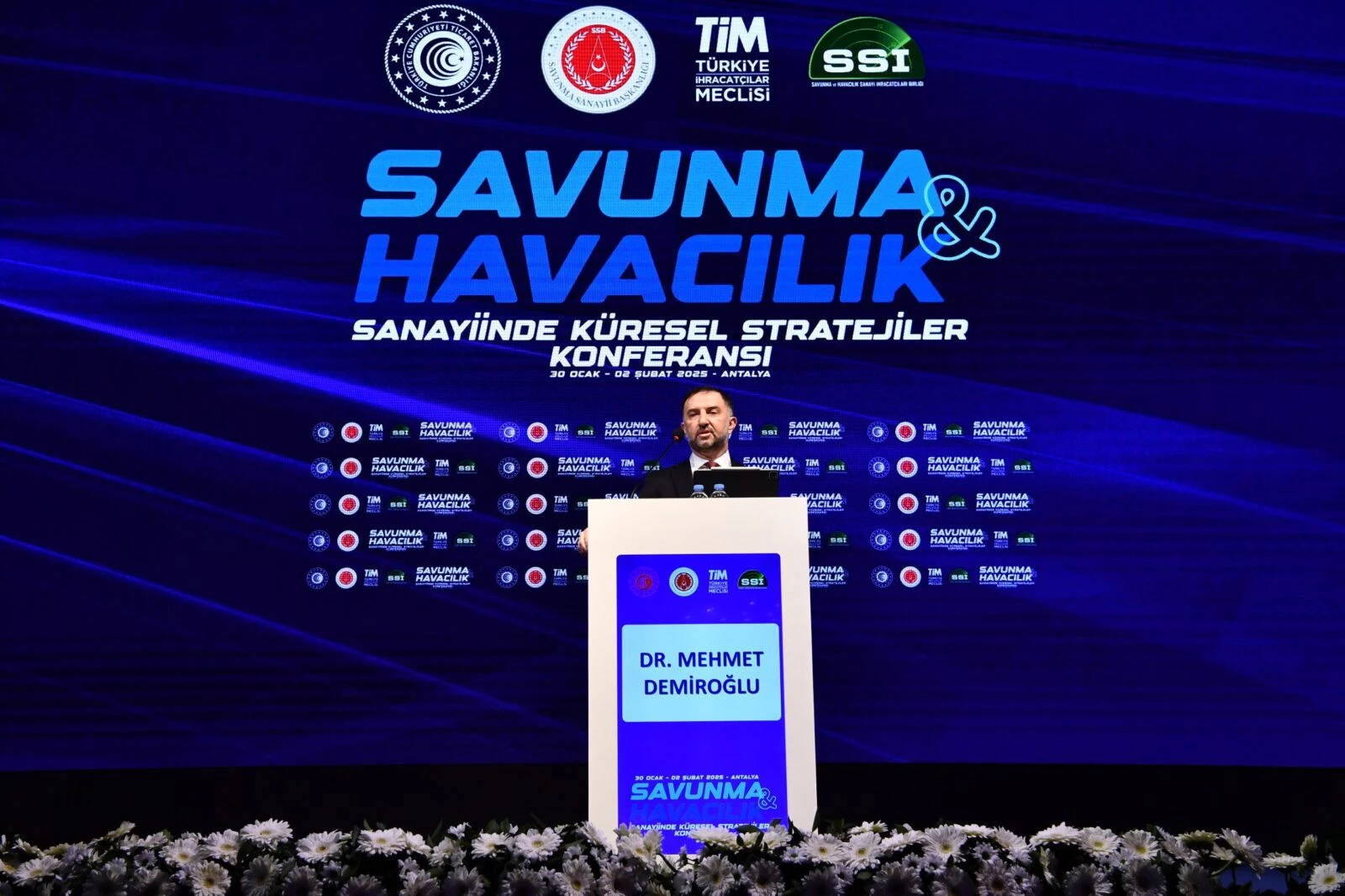
TAI surpasses export targets amid global challenges
TAI outperformed its 2024 export projection of $5.5 billion, reaching $7.2 billion in sales. With momentum building, the company now aims for $12 billion in annual exports, equating to $1 billion in monthly revenue.
“Our goal is to increase exports by 50% this year. The aerospace sector has faced global supply chain challenges—Airbus aimed for 1,000 aircraft but delivered only 650, and Boeing has also struggled. Despite these difficulties, Türkiye continues to perform strongly,” Demiroglu said.
TAI eyes ATAK helicopter sales to Germany
TAI is also targeting European defense markets, with CEO Demiroglu expressing a personal ambition to sell the ATAK helicopter to Germany, despite the absence of formal negotiations.
“Germany’s defense industry is not at the desired level and requires rapid solutions. I believe they will eventually turn to us, and I am working toward that goal,” he stated.
Germany is to accelerate the retirement of its 55-strong fleet of Tiger attack helicopters, which is a kind of equivalent to the Turkish ATAK helicopters, bringing forward the out-of-service date for the Airbus helicopter type by around six years to early 2033.
The German defense ministry has announced its latest equipment report, which details this change. The fleet will initially be reduced to 33 units by 2028 and then to 24 by 2032.
Germany had previously stated that the Tigers would be retired by 2038, but now says: “At the beginning of 2033, all remaining aircraft will be withdrawn from use.”
Germany is facing challenges in maintaining the high levels of combat readiness of its existing systems, a situation shared by several other countries with their NH90 helicopters.
The NH90, a utility helicopter developed collaboratively by European countries, has recently been the subject of some criticism regarding its performance and combat readiness rates. Several user countries have decided to retire it early. In this process, Australia retired all NH90s, Belgium decided to procure H145Ms, while Norway and Sweden decided to retire their NH90s early.
The T129 ATAK Helicopter was developed to fulfill the attack helicopter requirements of the Turkish Armed Forces, leveraging Türkiye’s specific national capabilities.
As part of the ATAK Program, 76 T129 ATAK helicopters will be delivered to the Land Forces Command (59 definite and 17 optional), 27 to the Ministry of Interior (24 definite and 3 optional), 6 to the Philippines Air Force, and 6 to the Nigerian Air Force, and expected to reach more countries in the upcoming future.

Aksungur UAV proposal to US for border security with Mexico
Expanding beyond traditional markets, TAI has proposed the Aksungur UAV to the U.S. for surveillance along the Mexico border.
“We suggested Aksungur to the U.S. for border security. This system, which can stay in the air for two days, offers an effective solution. They were surprised—they didn’t expect such a proposal,” Demiroglu revealed.
The Aksungur UAV System, with its high payload capacity, is an unmanned aerial vehicle system designed for continuous, day/night intelligence, surveillance, reconnaissance, and attack missions.
It is equipped with EO/IR, SAR, and SIGINT payloads, as well as various air-to-ground weapons, and has a Medium Altitude Long Endurance (MALE) capability. Aksungur is powered by two turbocharged diesel engines, allowing it to conduct extended operations up to 40,000 feet.
| Wing Span: 24 m | Endurance: 50 hours |
| Horizontal Length: 11.6 m (38 ft) | Payload Capacity: 750+ kg |
| Datalink Range: 250+ km | Maximum Take-Off Weight: 3,300 kg |
| Service Celling: 40,000 ft (MSL) | Engine Type: PD-170 Dual Turbo Diesel |
| TEBER-82 (Laser Guided Mk-82) | LUMTAS |
| TEBER-81 (Laser Guided Mk-81) | KGK (82) (Wing Assisted Guidance Kit) |
| Small Diameter Bomb | MAM-C |
| HGK-3 (Precision Guidance Kit) | MAM-L |
| Cirit | Note: 3 hardpoints on each wing with 500 kg, 300 kg and 150 kg capacities |
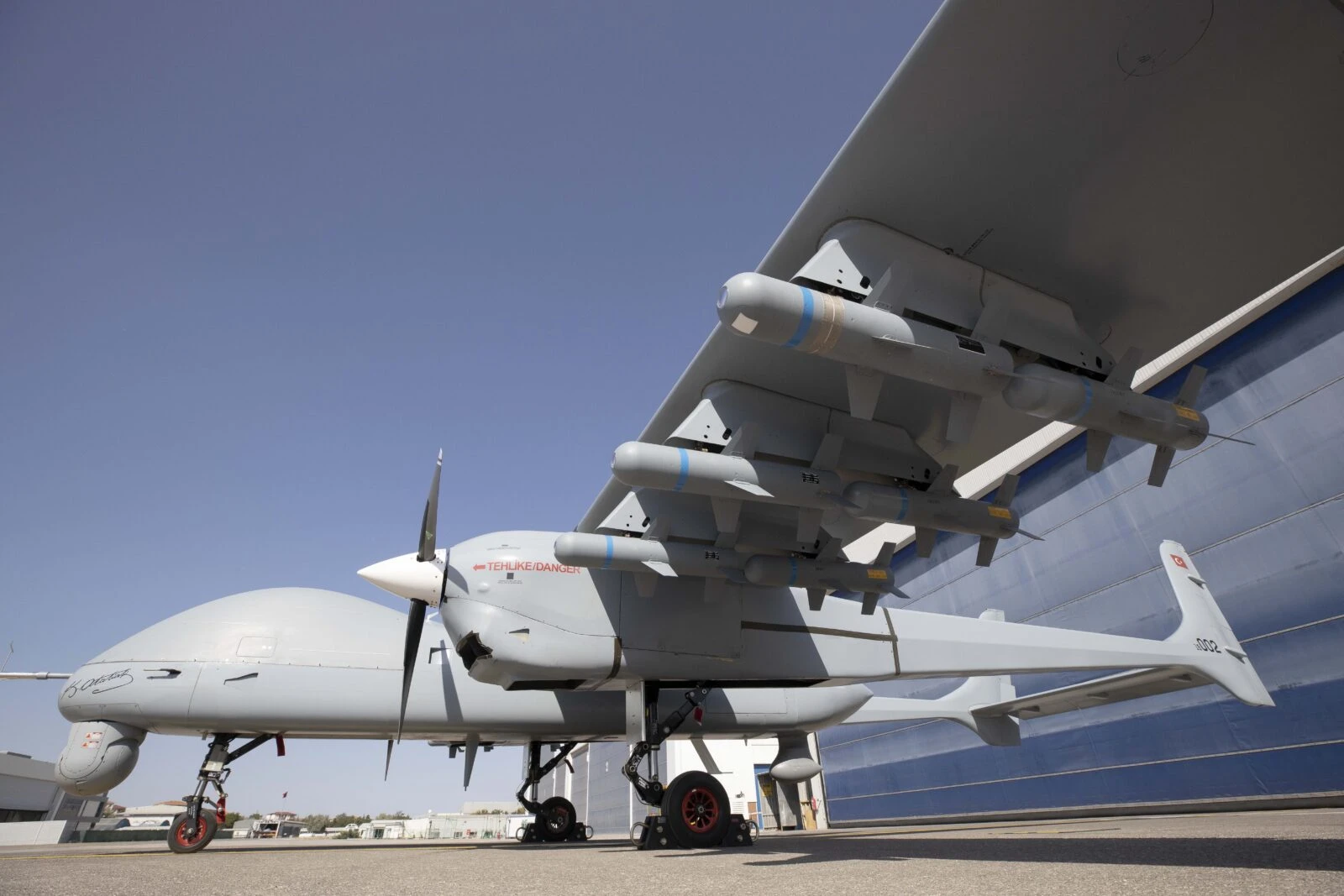
Türkiye’s growing role in global defense supply chains
Demiroglu highlighted a notable shift in international partnerships, emphasizing that companies previously unwilling to work with Türkiye are now seeking collaboration.
“In the past, some companies refused to sell us essential components like cameras. Now, they are returning with partnership offers. I told them, ‘Where have you been? We now have ASELSAN producing everything we need,’” he said, emphasizing Türkiye’s strengthened domestic capabilities.

NATO officials impressed by Türkiye’s defense advances
Demiroglu noted that NATO officials and international defense ministers visiting TAI facilities are often astonished by Türkiye’s technological progress.
“They struggle to believe what they see. Once they understand how advanced Türkiye has become, they start looking for ways to collaborate with us,” he said.
